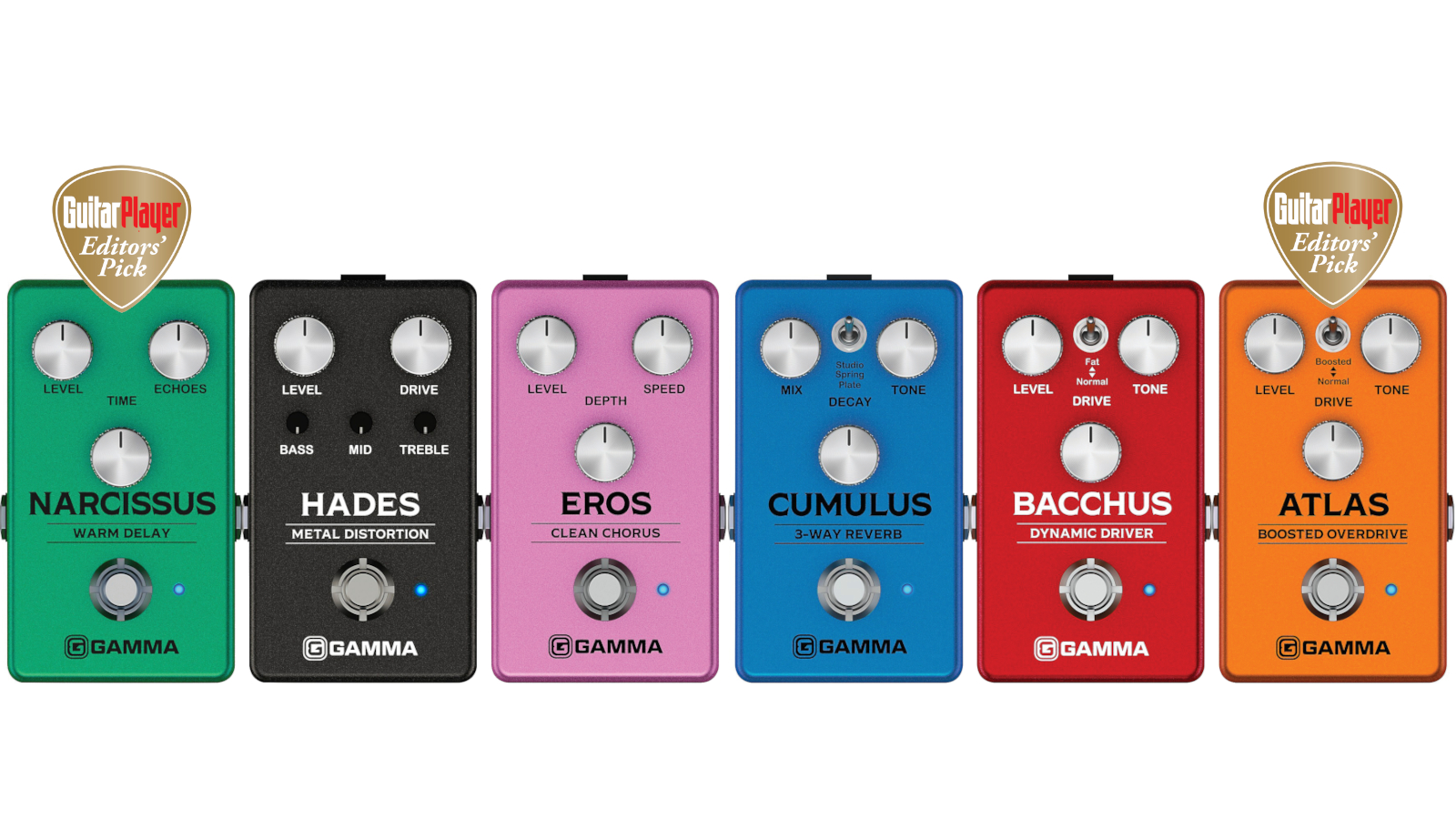GuitarPlayer Verdict
Well designed and ruggedly built, this range delivers sounds and functions commensurate with their promises and expectations
Pros
- +
Atlas Boosted Overdrive: Balanced and articulate, with a sweetly musical overdrive tone
- +
Bacchus Dynamic Driver: Warm, thick-mids overdrive with appealing compression and classic TS-style girth
- +
Hades Metal Distortion: An easy route to heavy, crunching metal distortion tones
- +
Eros Clean Chorus: A well-balanced and likeable chorus sound that’s usable on a wide range of settings
- +
Narcissus Warm Delay: A great sounding delay pedal for the price, with impressive delay time and a very usable range of settings
- +
Cumulus 3-Way Reverb: Compact and affordable reverb pedal delivering three popular reflection types
Cons
- -
Atlas Boosted Overdrive: None
- -
Bacchus Dynamic Driver: Less clarity than the Atlas, and arguably less to distinguish it
- -
Hades Metal Distortion: The mid control’s range takes some getting used to
- -
Eros Clean Chorus: Guitarists seeking the bonus of bucket-brigade signal massaging should look elsewhere
- -
Narcissus Warm Delay: None
- -
Cumulus 3-Way Reverb: A little noisy, and arguably not overly inspiring
You can trust Guitar Player.
The budget effects lineup has been a popular go-to for many manufacturers over the past several years, but Acoustic Control Corporation – the parent company behind the new six-pedal Gamma lineup – arguably has a richer history in vaunted professional gear than most. This is the company behind the massively powerful Acoustic 361 bass amps that became a touring staple from the early ’70s through much of the ’80s, belting out the low-end of four-string stars like Jaco Pastorius, John Paul Jones, Larry Graham, John McVie and many others.
Following a pair of lower-priced solid-state guitar combos in the Gamma range, the company’s new no-nonsense Gamma pedal lineup is designed in the USA and manufactured in China, and features six perennial standards, including three flavors of gain, chorus, reverb and delay. All but the latter two are a mere $69, with those pricier offerings landing at $89 each.
They all fit into the same rugged 4.59 x 2.75 x 2.19-inch metal box, each differentiated by its own color and model name – mostly based on the Greek god that best represents the pedal’s capabilities – and all sport knurled silver knobs plus bonus features on a few, as detailed below.
Each pedal also carries the same single input, output and electronic-switching buffered bypass, and has an easy-access battery panel on the underside with a nine-volt DC center-negative adaptor input on the forward edge.
All were tested using a Fender Jazzmaster and a Gibson Les Paul into a 65amps London head and 2x12 cabinet, and a tweed Deluxe-style 1x12 combo.
ATLAS BOOSTED OVERDRIVE
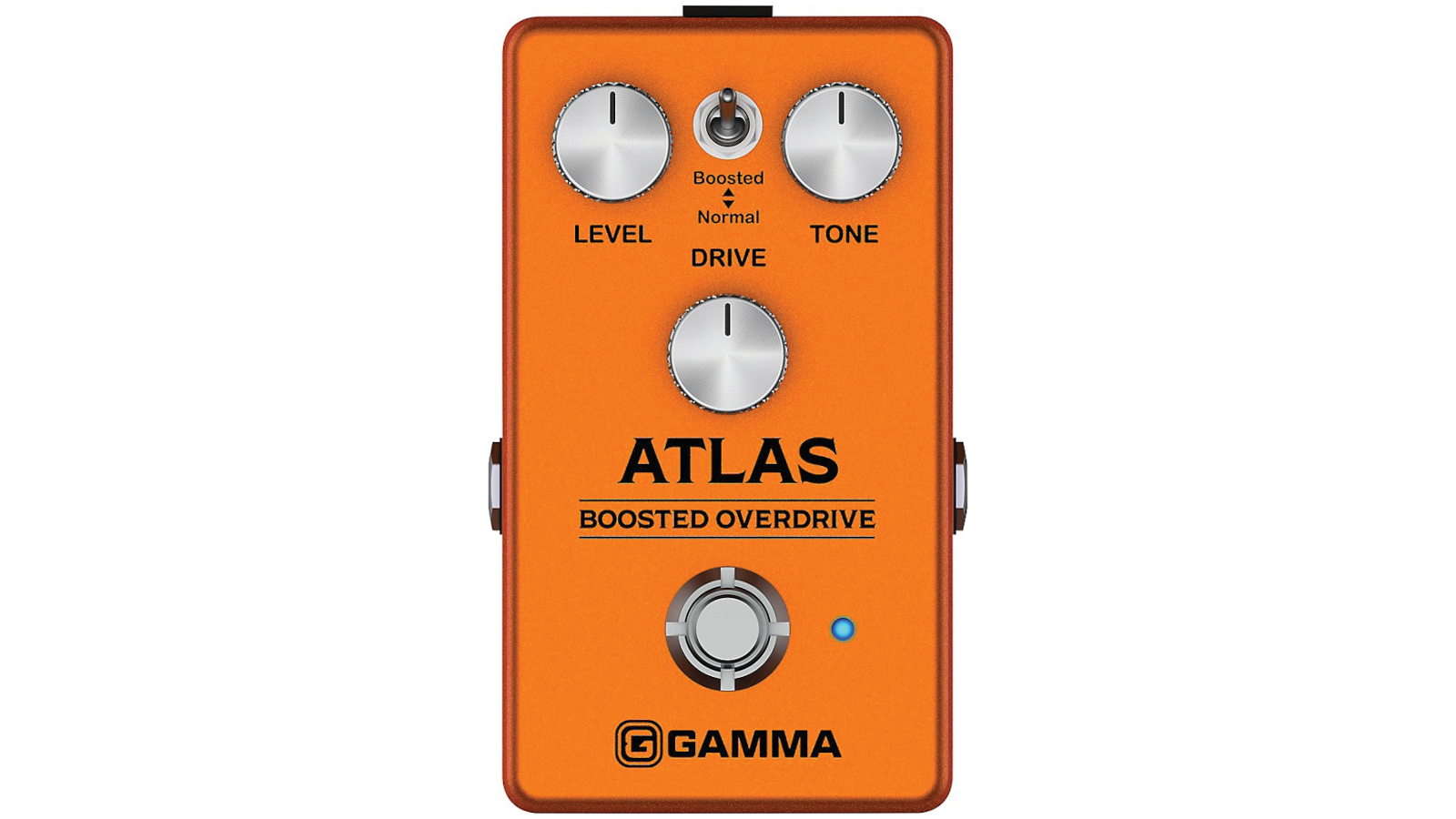
The candy-orange Atlas Boosted Overdrive is a low-to-medium-gain drive pedal aimed at gain staging and overtone enhancement without masking the character and dynamics of your guitar and amp. It also enables hotter levels to push tube amps into heavier breakup with the Boosted toggle switch engaged. Control knobs include drive, level and tone.
While the characteristics of a low-gain boost or overdrive can sound quite subtle on paper, many guitarists find the resulting tone to be transformative, and I was impressed with how well the Atlas ticked that box for the price.
This is a surprisingly balanced and open-sounding overdrive pedal, with lots of shimmer and harmonic enhancement plus plenty of clarity throughout the gain range. And it all gets delightfully more so with the Boosted switch engaged, without going overly squishy or hairy.
What’s more, there’s a sweetness and musicality to it that holds up quite well against many boutique overdrives costing two or three times this much. It doesn’t quite perform Klon-level tonal magic tricks, but the Atlas delivers very appealing low-gain overdrive that should suit a boatload of applications.
CONTROLS: Level, drive, tone
SWITCHES: On/off foot switch, Boosted/ Normal gain mode switch

BACCHUS DYNAMIC DRIVER
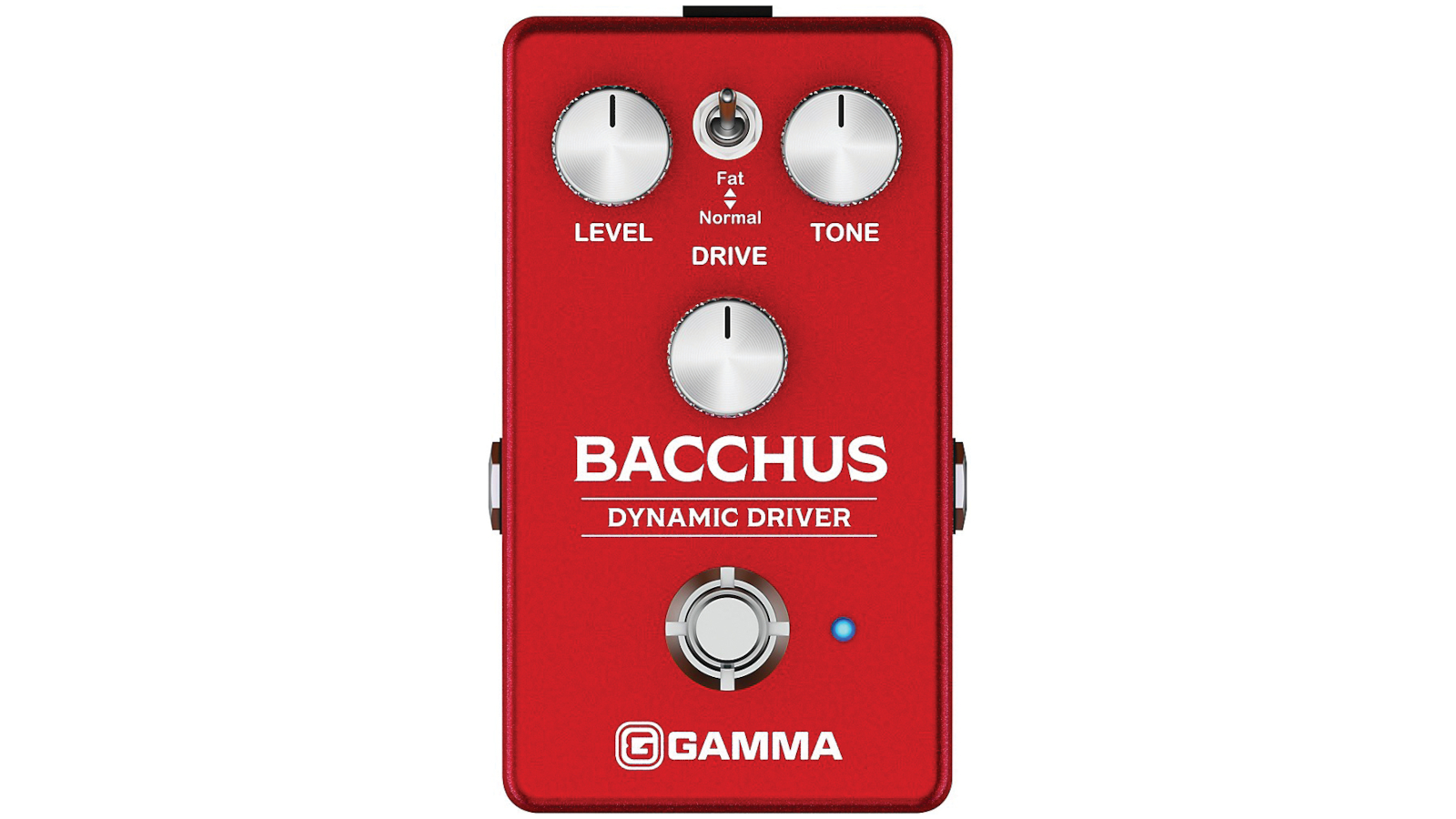
Colored a rich red in honor of the Greek god of wine-making and bacchanalia, the Bacchus is a broad-ranging gain pedal billed as taking you from “edge of breakup” to “epic metal tone.” Controls include drive, level and tone, and there’s a Fat mode switch for a thicker, more full-bodied core tone that the makers say is great for fattening up single-coil pickups or adding more girth to humbuckers.
Despite the maker’s description, the Bacchus doesn’t provide notably more gain than the Atlas, perhaps until you wind the Drive up toward max. What it does present is a more midforward voicing that’s a little closer to the classic hazy thickness of the Tube Screamer platform, which still appeals to so many players.
It’s a warmer, slightly chewier overdrive overall, with perhaps a little more compression at the front of the note. The Fat switch does as advertised for single-coils, although it’s subtle at best and virtually negligible with the Les Paul. A good one when your clean amp needs an injection of thick and juicy.
CONTROLS: Level, drive, tone
SWITCHES: On/off foot switch, Fat/Normal voicing mode switch

HADES METAL DISTORTION
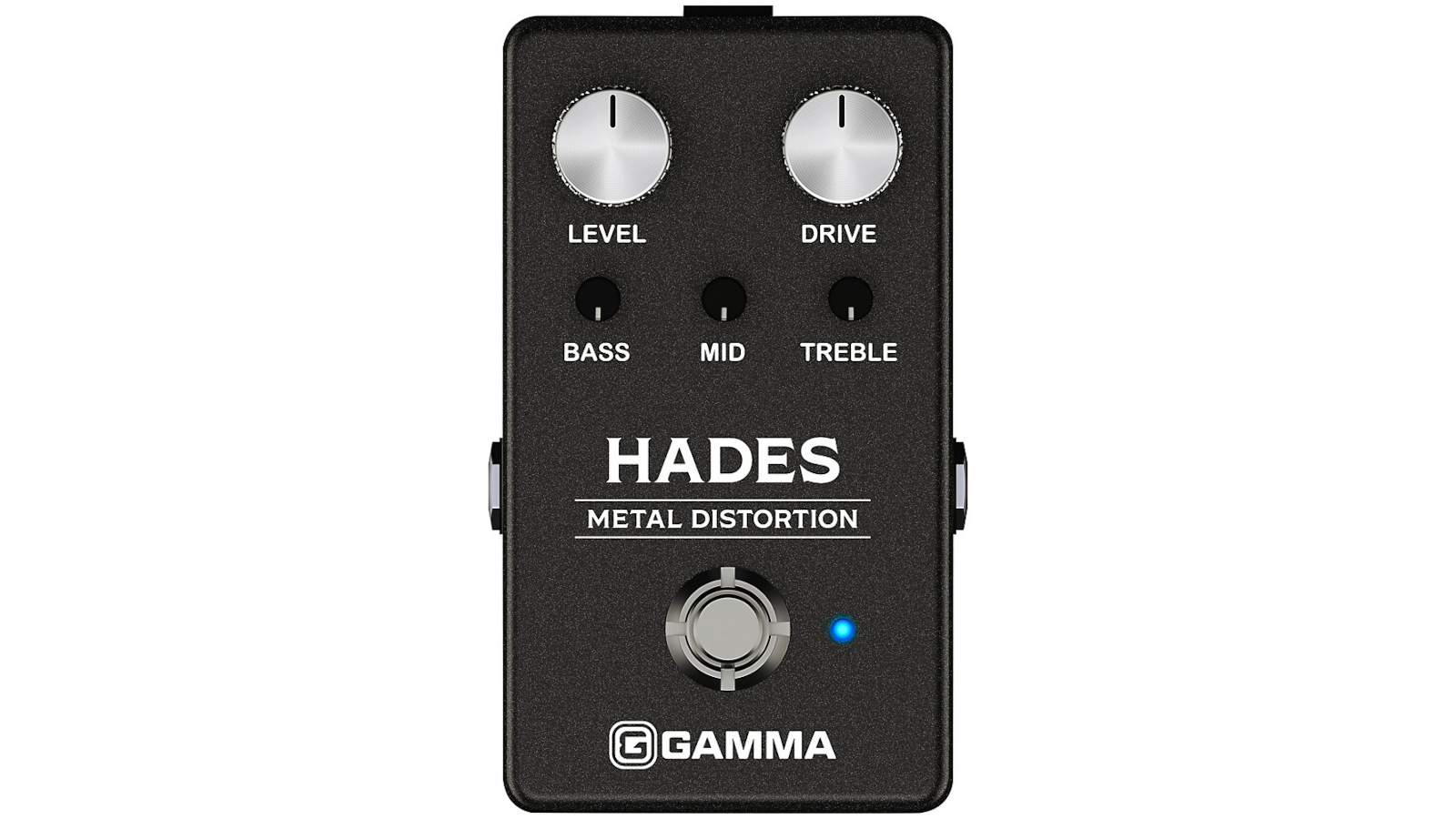
Of all the Greek god–themed pedals in the bunch, the metallic-black Hades is probably the most accurately self-descriptive. The maker promises aggressive high-gain distortion without sacrificing articulation and clarity… unless you want it that way. Full-size knobs offer drive and level, with the smaller black plastic knobs below them for setting bass, mid and treble levels.
The distortion pedal might be one of the simplest of gain-increasing devices to approximate, yet one of the trickier to do really well. The Hades gives it a good try at this price, delivering what players generally expect from the sector. It piles loads of saturation into a traditional metal-voiced driver that’s an easy one-stop-shop for classic metal tones, with a fairly portly feel overall. That said, it benefits from respectable clarity for a high-gain pedal and a crispy high end that helps it cut through.
Rolling the mid control down to zero for that archetypal scooped EQ really just eviscerates the thing entirely, dropping the volume in the process. Its voicing is pretty darn scooped as is, although boosting bass and treble can further enhance that. Raising the mid, on the other hand, unveils a chunky, retro-metal sludge that I enjoyed even more.
CONTROLS: Drive, level, bass, mid, treble
SWITCHES: On/off foot switch

EROS CLEAN CHORUS
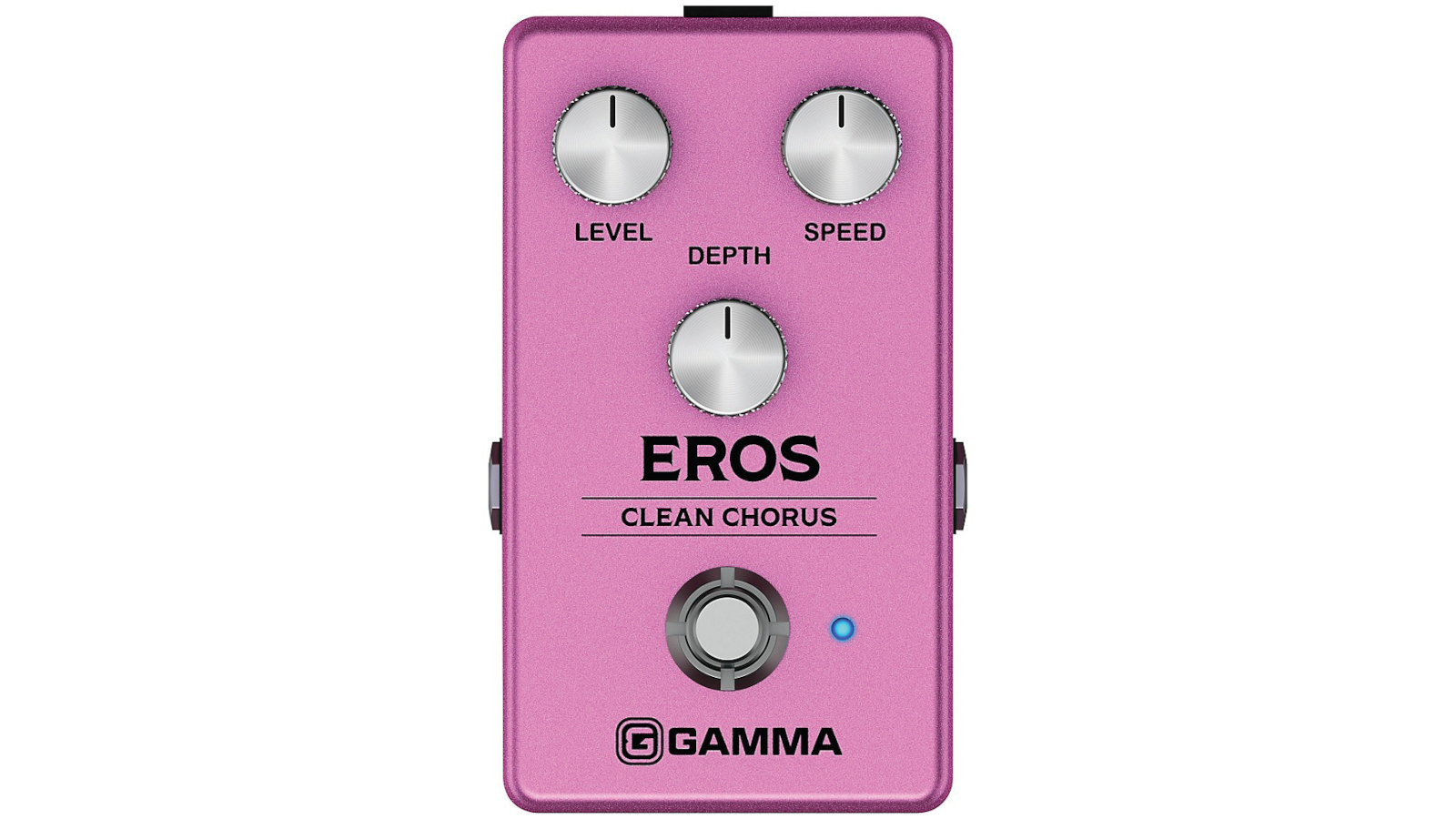
Was naming this metallic-pink chorus after the Greek god of love intended to evoke the potentially dizzying effect of both the emotion and the pedal? Either way, it’s an easy pedal to like, if maybe not be obsessively enamored of.
Controls for level, depth and speed govern an analog circuit biased toward the crisp and shimmering. Chorus pedals – even pricy ones – can range from the delectable to the distracting, which makes the Eros’s achievements all the more impressive at this price point. This Gamma design does well, in my view, to avoid the extremes, restraining all parameters to the musical and usable. The result is an appealing chorus that’s easy to dial in and a doddle to work into your setup.
The “Clean” in the name hints at the fact that this pedal doesn’t give you the characterful analog textures of a CE-1 or a Small Clone, instead focusing on the effect itself, making it sweetly loveable and a real grower of an effect in the process.
CONTROLS: Level, depth, speed
SWITCHES: On/off foot switch

NARCISSUS WARM DELAY
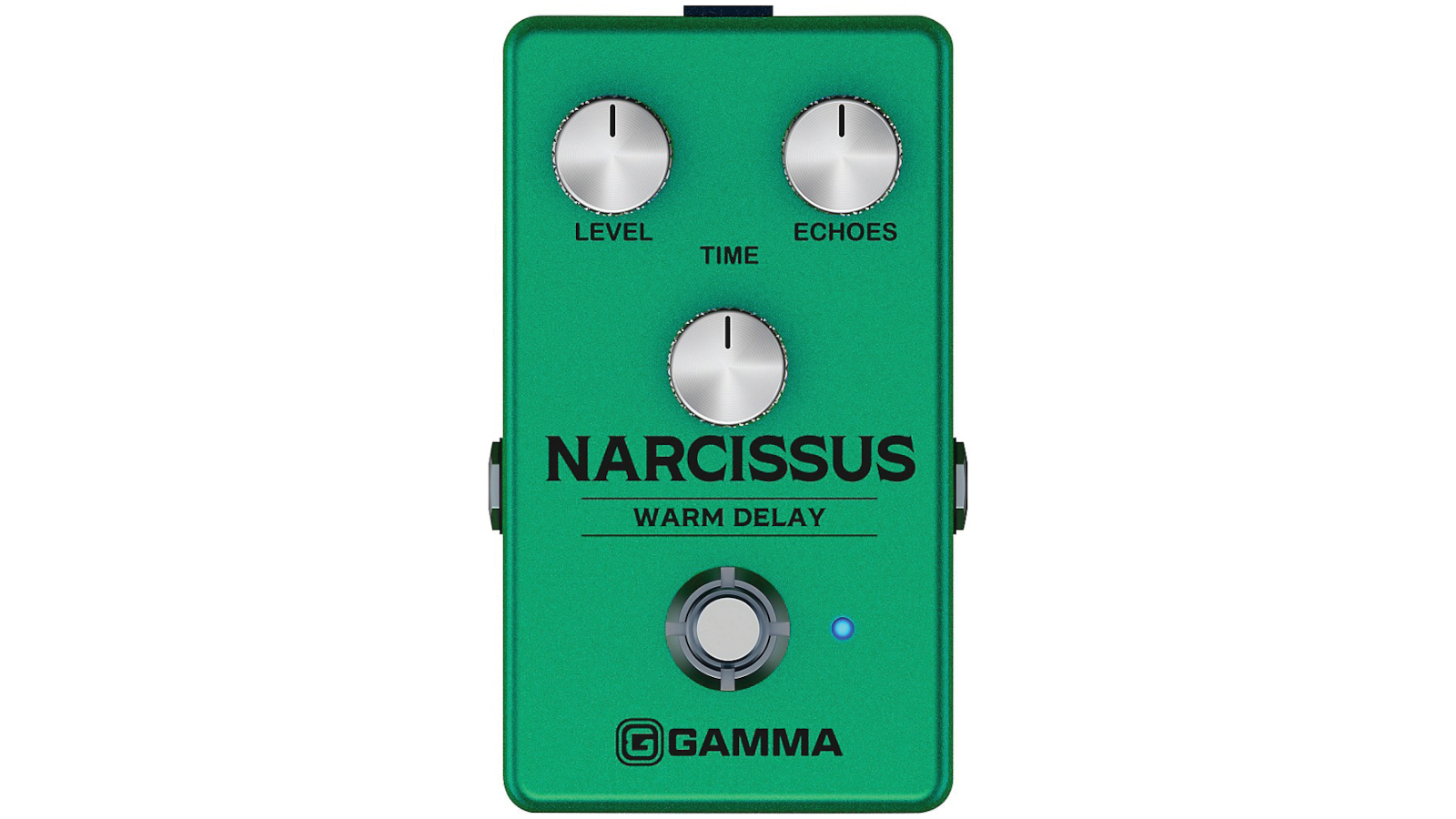
Is delay the effect of the vain and self-obsessed? The metallic-green Narcissus seems to think so, although after just a short while I found it to be quite giving, selfless and eminently likeable. Rather than employing the generic delay DSP found everywhere these days, the Narcissus is a nominally analog delay. It uses a Princeton PT2399 chip with some digital elements that has lately been found in a number of modern pedals that chase bucket-brigade-like echoes.
Controls for time, echoes (repeats) and level are all you need to get the job done. I didn’t expect a whole lot out of a delay pedal listed at $89, which made the Narcissus all the more surprising. Without offering the bonus functions and added-parameter switching of more complex units, it sidesteps all the second guessing, simply delivering very usable and appealing echoes right out of the gate.
I found the “Warm” in the name entirely justified, with the delectably thick impersonation of girthy analog-like repeats providing more character than might be expected from such a pedal. In addition, the long delay time allowed for major atmospherics and some wild self-oscillation when desired. Tasty stuff.
CONTROLS: Time, echoes, level
SWITCHES: On/off foot switch

CUMULUS 3-WAY REVERB
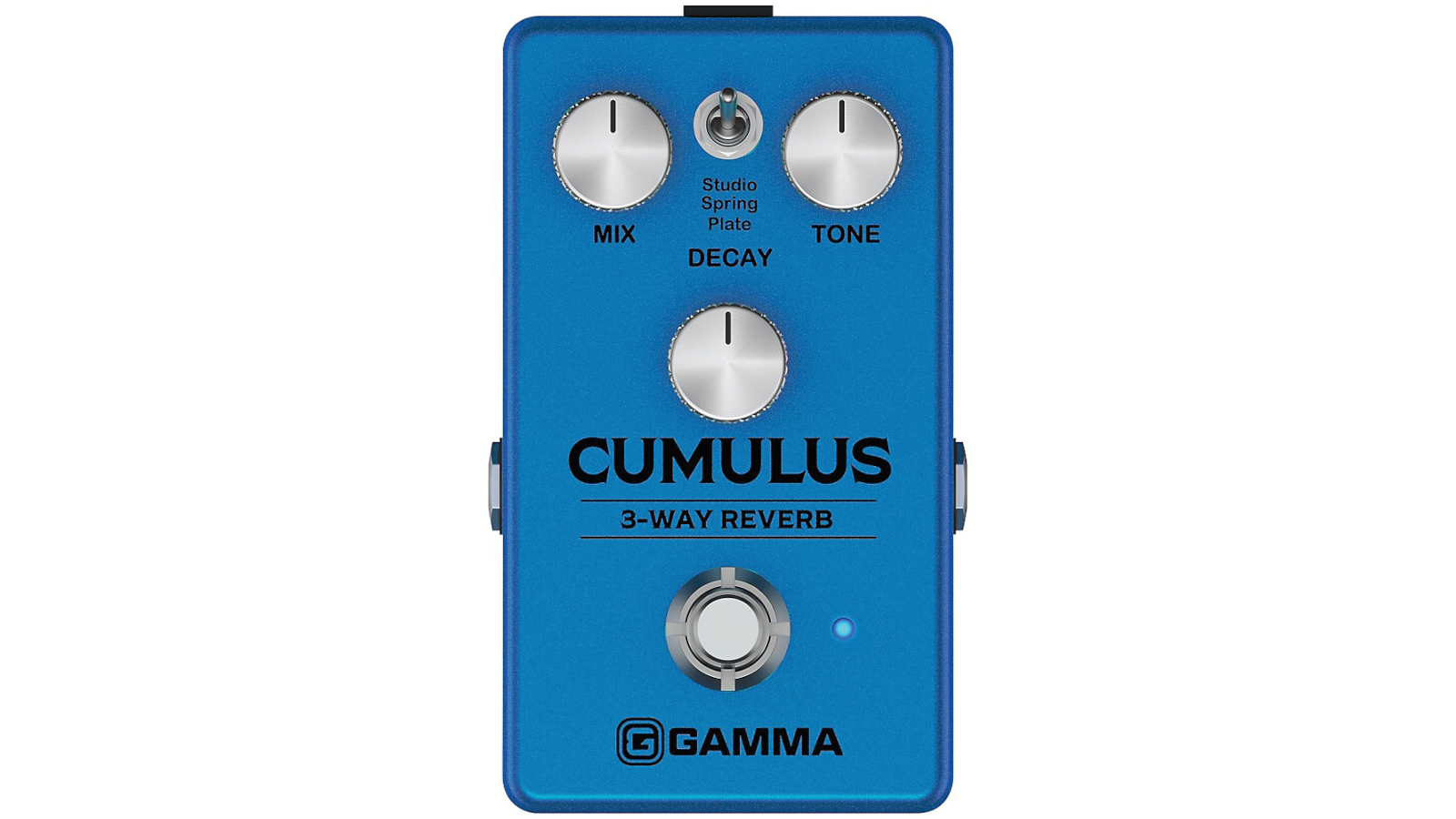
The metallic-blue Cumulus strays from the Greek-god theme to dub a reverb pedal in the sky-themed manner that some other makers have used of late. This is the only properly digital pedal in the lineup, and the “3-Way” in the name represents the impressive variation of type found on its mini-toggle selector for Studio, Spring and Plate.
The decay, tone and mix knobs set the depth and timbre. Reverb is tricky to do extremely well on a budget, and the Cumulus perhaps makes that case first and foremost, although it’s also a usable and well-designed pedal at heart. Each of its three reflection varieties is usable, if not terrifically realistic, and the controls offer the range to do just about anything you’d want from a compact, workaday pedal.
The overall quality, however, puts me in mind of the DSP loaded into more affordable “multi-featured” solid-state practice amps. It certainly does most of what it sets out to do and should provide good value to many players, but arguably it isn’t overly inspiring. It was also the noisiest of the six Gamma pedals upon switching on – perhaps not unusably so and perhaps noteworthy only because the others are so impressively quiet.
CONTROLS: Decay, tone, mix
SWITCHES: On/off foot switch, mini- toggle for reverb type: Studio, Spring and Plate

CONCLUSIONS
In all, I was impressed with the six-pedal Gamma series, and certainly more than I had expected to be, given the price range. They are well designed and ruggedly built, their buffered-bypass is refreshingly neutral, and all deliver sounds and functions commensurate with their promises and expectations.
I found the Eros a chorus pedal that I could easily use in many situations. But I was even more smitten with the Atlas Boosted Overdrive for its balance, clarity and tasty overtone enhancement, and with the Narcissus Warm Delay for its girthy analog character and excellent range of parameters.
All are worth checking out, but the latter two deserve Editors’ Pick Awards.
Visit Acoustic Control Corporation for more information.
Dave Hunter is a writer and consulting editor for Guitar Player magazine. His prolific output as author includes Fender 75 Years, The Guitar Amp Handbook, The British Amp Invasion, Ultimate Star Guitars, Guitar Effects Pedals, The Guitar Pickup Handbook, The Fender Telecaster and several other titles. Hunter is a former editor of The Guitar Magazine (UK), and a contributor to Vintage Guitar, Premier Guitar, The Connoisseur and other publications. A contributing essayist to the United States Library of Congress National Recording Preservation Board’s Permanent Archive, he lives in Kittery, ME, with his wife and their two children and fronts the bands A Different Engine and The Stereo Field.
"The only thing missing is the noise from the tape loop." We review the Strymon EC-1 Single Head dTape Echo, a convincing take on a very special vintage tube Echoplex
"BigSky MX will be replacing the BigSky as my go-to reverb pedal. I’ve heard nothing that covers all the bases with such pristine and detailed audio quality." We crowned the Strymon BigSky MX the champ of multi-reverb pedals
